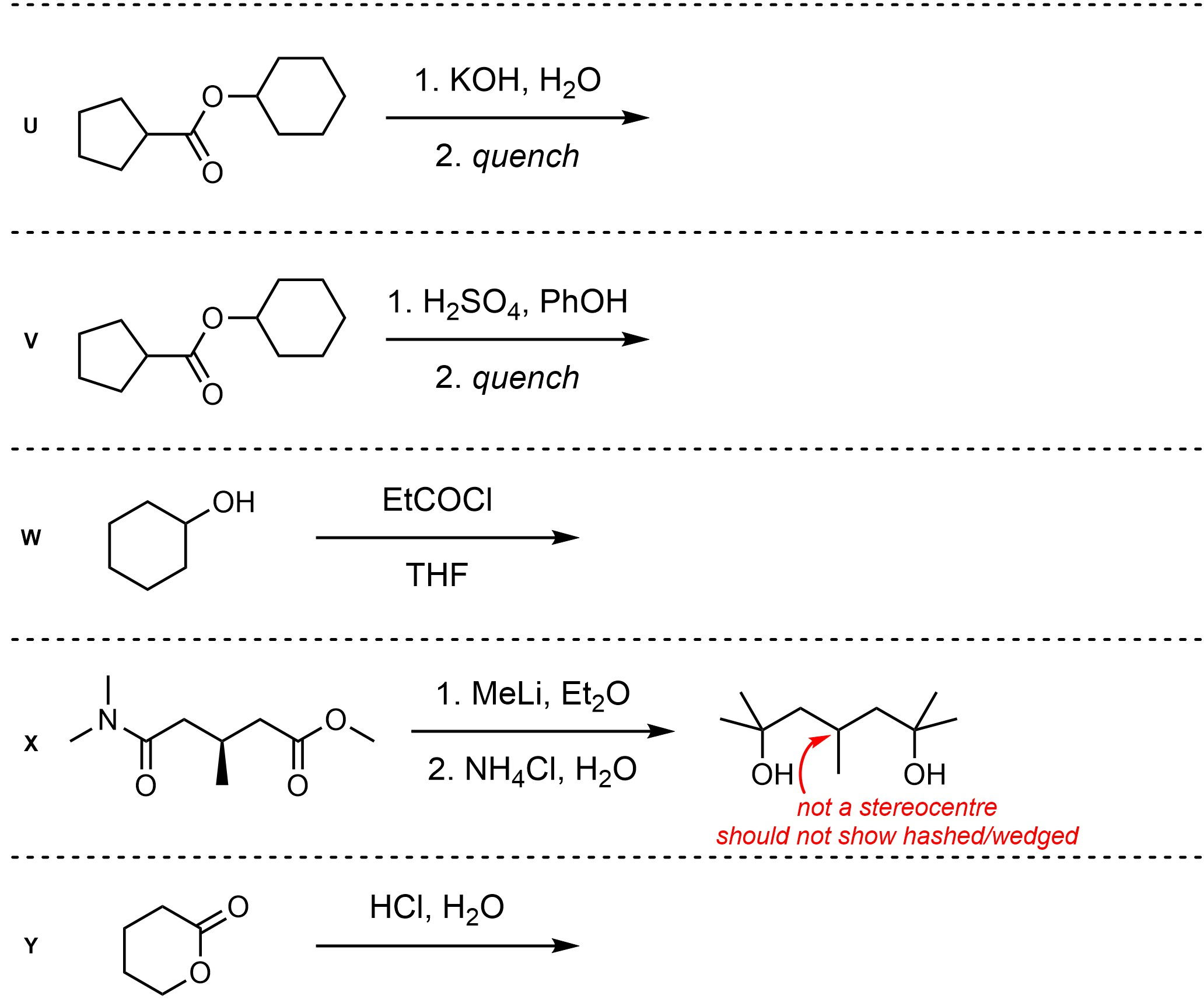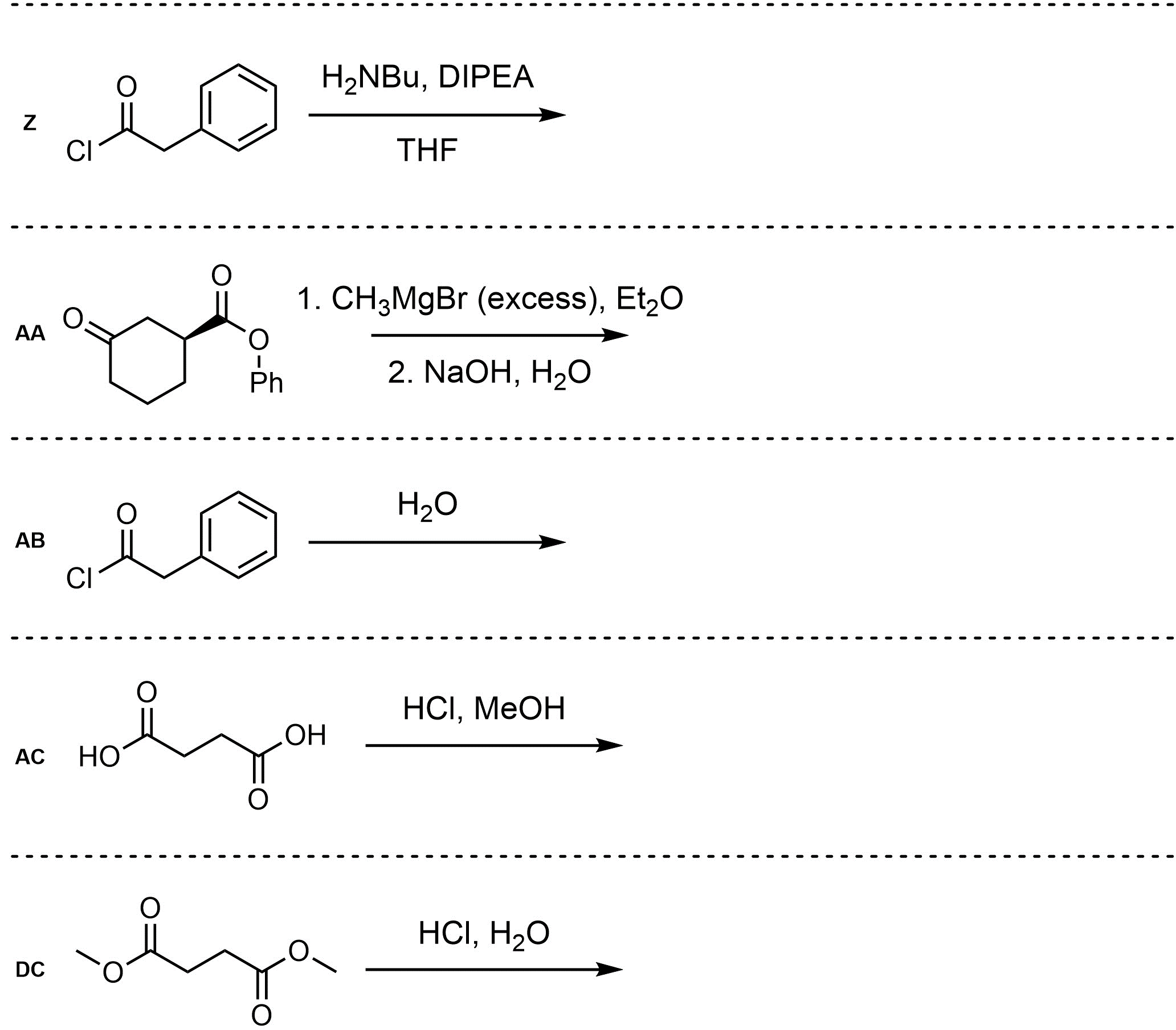Chapter 13 Practice Problems
Answers for these practice problems are on the next page.
A good approach is to answer all of the questions on a piece of paper and then check your answers. This avoids accidentally seeing the answer(s) for questions you have not done yet.
Because this chapter’s primary emphasis is reaction outcomes (instead of concepts) the style of questions has adjusted to match.
Q13.1: Rank each set of carbonyl-containing electrophiles by how quickly they would undergo addition-elimination reactions relative to each other (slowest to fastest). The carbonyls to consider are highlighted.

Q13.2: Assume each of the following is one (or more) addition-elimination reactions. For each reaction draw the expected major organic product(s). The products must be drawn as line-angle structures. Clearly indicate the appropriate stereochemistry using hashed and wedged bonds where necessary. If the product(s) is/are formed as more than one diastereomer, draw all diastereomers formed. If the product(s) is/are formed as a racemate (racemic mixture) draw only one enantiomer and write the word “racemic” beneath/beside it. Do not write “racemic” if it does not apply.
This chapter contains many more specific examples of chemical reactions than previous chapters.






Q13.3: A reaction equation is given below. Propose a reasonable mechanism for the reaction. Show all necessary intermediates, curved arrows, lone pairs, and formal charges. If there is a catalyst remember to regenerate it at the end of the reaction.

Q13.4: A reaction equation is given below. Propose a reasonable mechanism for the reaction. Show all necessary intermediates, curved arrows, lone pairs, and formal charges. If there is a catalyst remember to regenerate it at the end of the reaction. You do not need to show curved-arrows for the first mechanistic step (involving elemental magnesium) or the “quench” but you should indicate what exists before and after these steps.


